 |
||||||||||||||||||||||||||||||||||||||
| OVERVIEW – Camps Bases and Installations | ||||||||||||||||||||||||||||||||||||||
| Back to Overview | ||||||||||||||||||||||||||||||||||||||
HISTORY OF UP PARK CAMP
COAST GUARD BASES During the seventeenth and eighteenth centuries, British troops posted to the West Indies and in particular to Jamaica suffered great losses as a result of the dreaded disease yellow fever. By the late eighteenth century the mortality rate was nearly 5% of the troops stationed in Jamaica. This led the House of Assembly to pass a resolution permitting construction of suitable barracks for the troops. In 1784, 156 acres of the estate known as Up Park Pen was purchased by the British War Department for 350 Pounds. Lathbury, Curphey and Harman Barracks and the Polo Grounds are the notable large-scale facilities now accommodated on this land. For well over a century little changed, but with the approach of the twentieth century there was great expansion – and then contraction. In 1900, the camp was expanded with the purchase of 257 acres of adjoining land for 3,789 Pounds, 19 Shillings and 6 Pence, upon which now stand the Married Quarters, Briggs Park, the Bustamante Hospital for Children (formally the British Military Hospital) and the National Stadium and Arena. In that same year an additional 85 acres of land was purchased along the eastern side of Mountain View Ave (formerly the Long Mountain Road) for 680 Pounds and used for the construction of a rifle range. Between 1919 and 1922 an additional 112 acres to the north and south of the rifle range was purchased for 1,190 Pounds. Shortly after the first purchase of land in 1784 the barracks at Up Park Camp were destroyed by hurricane, resulting in the construction of temporary barracks with inadequate facilities. Major General (subsequently Field Marshal Sir George) NUGENT, Governor of Jamaica from 1801 – 05, proposed and got approval for the construction of a military hospital and barracks for 1,000 troops. In 1820, Wolmer’s Pen was purchased and its well alleviated the severe water problems of the military base. By 1830, and possibly earlier, water was also supplied by means of a pipeline of 8 inch iron pipes down Hope Lane (now Hope Road) from the Hope and Mona sugar estates near Papine. The Camp had changed very little between 1900 and the Second World War (1939 – 45). On the outbreak of war the authorities had to accommodate additional troops and this requirement led to the construction of Harman Barracks (1943 – 44). During World War II a camp was also established for the detention of German prisoners of war. These POWs built the present day Jamaica Officers Club to replace an earlier officers club. In the 1950s Tom Redcam Avenue was built through purchased Camp lands to relieve traffic congestion in Cross Roads. Further land along this road was acquired from the British War Department for the construction of the headquarters of the Jamaica Library Service and the Kingston and St. Andrew Parish Library which were opened in July 1958. Shortly before Jamaica’s Independence, the Military Workshop became the Jamaica Military Workshop and moved to its present location within Lathbury Barracks. This made its former facilities available to the Jamaica Constabulary Force which now uses these grounds to house its Transport and Repairs Department. In preparation for Jamaica’s hosting of the 1962 Central America and Caribbean Games, 83 acres of land was purchased from the War Department for the construction of the National Stadium. In 1962 Curphey Barracks was built to accommodate the National Reserve. The JDF Air Wing was established in January 1963 and its location in Up Park Camp required the establishing of an airstrip on part of the Polo Grounds. With the withdrawal of United Kingdom Forces in 1962, the British Military Hospital was transformed into a children’s hospital (named after the then Prime Minister, Sir Alexander Bustamante). During the 1960s, the then Jamaica Rifle Club (now the Jamaica Rifle Association) acquired a section of Camp land between Mountain View Avenue and the Long Mountain ridge, on which they constructed their headquarters and ranges. This period also saw the disposal of the remainder of the lands east of Mountain View Avenue and the sale of just over 18 acres west of Camp Road. Today Up Park Camp occupies a total of 90 hectares of land and houses all units of the JDF except the JDF Coast Guard, whichever of the regular battalions of the Jamaica Regiment (infantry) is currently based at Moneague Training Camp in central Jamaica and three companies of the Third Battalion Jamaica Regiment (National Reserve) permanently based at Montego Bay, Mandeville and Port Maria. Any location with such a long and diverse history usually has its
legends and Up Park Camp is no exception. One of its main entry points is named Duppy
(ghost) Gate – and with good enough reason. In the days of the original West India
Regiment its sentries at this gate were regularly visited by an officer in period uniform,
his sword slapping against his leg. The guard would turn out but as soon as they were
ready to report the ghostly officer would vanish! In 1991 Newcastle commemorated its 150th year as a military installation. Its story is intertwined with the Jamaican tour of duty of Field Marshal Sir William Gomm. He was, incidentally, Britain’s longest ever serving soldier, having been an ensign at the age of 10 and Constable of the Tower of London over 80 years later at the time of his death in 1875. The idea of establishing a military barracks in the hills of St Andrew was proposed by Gomm, then, as a Major General, Commander of Her Majesty’s forces in Jamaica. In a letter shortly after his arrival in Jamaica, Gomm expressed great concern to the Governor at the high mortality rate among European troops in Kingston. The death rate due to yellow fever in the first half of the 19th century was one soldier every two and a half days; 1838 was a good year with only 91 men dying! In 1839, the number rose again to 110, and to 121 in 1840. This situation, common to the West Indies generally, was so desperate that when the renowned Royal Scots were warned for duty in the West Indies, the officers drew lots as to who would go. It was generally accepted that such a posting was virtually a soldier’s death sentence. Gomm dispatched letter after letter to the British government
seeking the authority and finances to start construction of barracks in Newcastle.
Initially, these pleas fell on deaf ears as the British government, worried about the
expense, persistently ignored the dangerous and cruel loss in manpower resulting from
yellow fever. Eventually, Gomm acted on his own, knowing that he had the approval of the Governor. Without British Government consent he started construction early in 1841 at the Newcastle coffee plantation. In December 1841 the Board of Ordnance authorized erection of a permanent barrack at Newcastle to house a battalion. Gomm had at last won his battle. In 1842, very soon after Newcastle was established, only 24 of 197 troops died there. Five years later only seven men died from a strength of 583, and in 1853, a mere two men perished out of 476. Today, the visible memorials of that era – and of the relatively
small number of soldiers who died there – are two immaculately maintained small cemeteries
in Newcastle. From its founding until 1959, Newcastle was used by both British and
(during World War II) Canadian regiments serving in Jamaica as a change-of-air camp. Some
regiments moved to the hills completely, while others would rotate companies during the
year. Others merely sent cadres for training at Newcastle. In 1959 the famous old West India Regiment was re-formed and Newcastle became the Federal Defence Force Training Depot, training recruits from all over the newly formed West Indies Federation. In 1962, when the unsuccessful Federation was dissolved, the Regiment was disbanded. Jamaica simultaneously sought her Independence, which was achieved on 6 August 1962. Newcastle was given to the Jamaican Government by Britain as part of a general settlement of all military lands in Jamaica. Following Jamaica’s Independence in 1962, Newcastle became the Jamaica Defence Force (JDF) Training Depot. The following is a list of British and Canadian Units that have
served in Jamaica:
The infantry battalion of the National Reserve – the Third battalion
the Jamaica Regiment – is accommodated in four bases. These bases are strategically
located across the island. Their location establishes a military presence and facilitates
quick reaction and smooth deployment of troops into the operational areas. The four bases
are named after former serving members who have contributed significantly to the
establishment and development of the base named in their honour. Curphey Barracks Curphey Barracks is located in Up Park Camp, Kingston and as such is in close proximity to the main headquarters of the Jamaica Defence Force. It is the main base of the Third Battalion and houses the Battalion’s Headquarters, Headquarter Company (HQ Coy), Alpha Company (A Coy) and Bravo Company (B Coy). Curphey Barracks is named in honour of a great Jamaican, Colonel Sir Aldington George Curphey, Kt., C.B.E., M.C., a medical doctor who gave outstanding community service as well as exemplary service in the two World Wars and other wars fought by the British Forces. Although deceased since 1958, in lasting recognition of his public service to the military, he was made an Honorary Colonel of the Jamaica Regiment and the Reserves base in Up Park Camp officially named after him. Foster Barracks
Burke Barracks Burke Barracks located at the old Airport building in Montego Bay is named in honour of Major Basil Constantine Burke. Major Burke who was also from Montego Bay spearheaded the formation of Delta (D) Company in 1962 and commanded that sub-unit until his retirement in 1973. After he retired, his company requested to have ‘D’ Company named after him in permanent recognition of his service and leadership. The day after he died in August 1983, their wish was fulfilled. Whitehorne Barracks
HMJS CAGWAY, located in picturesque and historic town of Port Royal, is the home of the sailors and naval officers in the Jamica Defence Force Coast Guard. On 19 May 1998, approximately two years after being relocated from Princess Street (Downtown), Kingston, the Coast Guard base was formally Commissioned as Her Majesty’s Jamaica Ship (HMJS) Cagway.
The base at Port Royal was originally intended as temporary accommodation, but has now become the permanent home of the JDF Coast Guard. In 1984 the size of the base was increased when the Coast Guard took over the building that formerly housed the Police Training School, after the school was transferred to Twickenham Park in St. Catherine. The location of the base is steeped in military history, not only because it is located in historic Port Royal, but also that the ammunition dump that supplied the Forts that defended the approaches to Kingston Harbour in the days of the wars between the Spanish, English and French is located on the same compound. The remainder of the train line that was used to supply Fort Rocky and Fort Charles can still be seen today.The ammunition dump continues to be used by the JDF. The buildings that were constructed for the base in the early 70s
are made of wood. A new two-storey concrete structure which is to be the Coast Guard
Operations Building now dominates the compound. It was built last year as part of the
Joint Overseas Training program with the United States Naval Construction Battalion
(Seabees) and soldiers from I Engineer Regiment (JDF). The Wardroom is of ancient Spanish
brick and there are few other buildings of the same construction which are dated as the
history of Port Royal itself. Station Discovery Bay was established 01 December 1988 and serves as
a central In addition to maritime patrol duties the station is also equipped to undertake diving operations such as search and recovery and hull searches for contraband items. Personnel also provide valuable community service to a variety of civil organisations in the Discovery Bay area.
History of Moneague Training Camp Introduction The Moneague Training Camp is the home of the Second Battalion and is located 46 miles to the north west of the capital, Kingston and 12 miles to the south of Ohio Rios ( a tourist resort town). The camp has gone through many changes. As a training area and camp site its history date as far back as the eighteenth century.
Whatever the true meaning might be , the old town has surely had Arawak and Spanish influence. It is believed that the area was populated from before the discovery of the island by Columbus. The main part of the town, as it stands today, was laid out by the early Spanish settlers at a time when there were but a few main roads in the island. The town was in fact built on the only trans-island road which ran from Spanish Town to the north coast at the time. The Spaniards are known to have settled in the area where they engaged in cattle rearing on the large, open undulating pasture lands around. Cattle rearing is to this day continued as one of the economic ventures of the area engaged in by large and small farmers alike. Following the invasion of Jamaica by the English in 1655 and the subsequent fall of Spanish Town, Christoval Arnaldo de Yassi, the last Spanish Governor of the island, was said to have made a stand in the Moneague area where he set up his new and temporary Headquarters. Here he set about organizing the freed slaves into fighting bands with instruction to take to the hills and from there to attack and harass the British. These freed slaves later became the famous Maroons. However, despite his valiant rear-guard actions, Ysassi was beaten in subsequent battles fought with the English in the Moneague/St Ann area and fled to the north coast, and onwards to Cuba, in a canoe in 1660. The question of why Moneague has been a training area for so long naturally arise. The fact that it was, and still is, in a convenient location with regards to travel between Kingston, Spanish Town and the North Coast, is no doubt, one of the reasons. Another is the fact that Moneague was a strategic barrack location for British Troops during the time of the Maroon Wars. At that time also, attention had to be paid to the protection of the coast from French or Spanish invasions and many island barracks were built to house British troops for this purpose. The cool climate and open undulating terrain also lends itself to military training and must have figured in the early choice of this areas as a place to billet troops. Early history The Moneague area has been used by the Military from as far back as the middle of the eighteenth century. To deal more effectively with the Maroons during the first Maroon War (1734 to 1738), the British constructed eleven barracks across the island; six in Middlesex, two in Surrey and three in Cornwall.
After the first Maroon War, the barracks were still in use. According to CUNDALL’S Historic Jamaica’ an extract from the Journal of the House of Assembly on the state of forts and barracks in the Island in May 1745 describes the one in Moneague as: " a Barrack which now lodges twenty men and capable of holding thirty… is a present water tight but will soon require new shingling… as informed by Lt TROAH." By 1774 twenty-six more barracks had been built across the island in addition to the original eleven. The old barracks were said to be in served their purpose well of strategically dispersing His Majesty’s troops to deal with the threats to the island which were not so much from the French or the Spanish but rather the machinations of the many thousands of slaves who by then greatly outnumbered the whites. All the Moneague barracks built during these years have long since crumbled into ruins, but the continued use of the area by the military remains to this day. Moneague this century The camp was not always where it now stands as troops on exercise in the Moneague area used to be based at the old Moneague Hotel from as early as the 1920s. The Hotel "was used by companies of the Jamaica Battalion while they were on training in Moneague during the 1920s and 30s.
The Canadians did in fact use Moneague Camp extensively throughout the years of the Second World War. The Winnipeg Grenadiers trained in Jamaica for about a year at the start of World War II. Before then, the British had a regiment (The Kings Shropshire Light Infantry) here for eighteen months. Of all the Canadian Regiments to have stayed here, the Argyle and Sutherland Highlanders were billeted there for over two years during the War. In 1944 ‘The Brocks’ (another Canadian Unit) came to Jamaica relieving in the process the Irish Fusiliers of the United Kingdon. The Fusiliers left after the War in 1945. The reasons for maintaining a Unit in the colony of Jamaica have varied over the War years. At first when the Germans were over-running North Africa, and were intent on establishing a bridge-head in South America, the island outposts in the West Indies were vital to the defense of the North American Continent. However, by the time the ‘Brocks’ had arrived ‘D’ Day had come and gone and the reasons for billetting troops here became fourfold: to be ready for operational duty, to assist in the training of local forces, to provide the perimeter guard for the internment Camp for POWs and to provide aid to the civil power in dealing with ‘negro uprisings’. While the companies stationed in Up Park Camp were occupied with camp duties, range work and platoon and company bivouacs, each rifle company was billeted in turn at Moneague for a period of four weeks. After two weeks training on battle drills in the area each company then completed field exercise under battalion supervision. They experienced, as with all others who have trained in the area, the effects in the field of tropical days and nights, the occasional irritation from poisonous plants, wood ticks and grass lice. One consolation was Jamaica had no poisonous snakes as usually found in other tropical countries. Moneague camp in its present location
Tents were used to house troops and continued to be used right up to the beginning of the 1980s. The Camp is situated in an area known as Sewell’s Piece which is part of a piece of land known as Moneague Hotel lands. The new lands was said to measure "24 acres, 3 roods and 13.4 poles save and except for one rood and 14.8 poles which was handed over to the Government for road improvement." This land includes the Airstrip near Walton, the Riverhead and Endeavour areas. Copyright ©
Jamaica Defence Force, all rights reserved. |
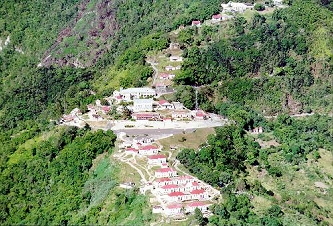
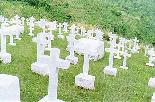
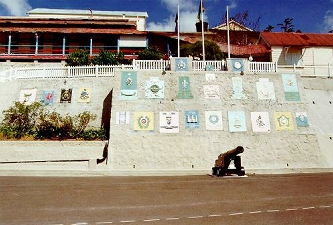
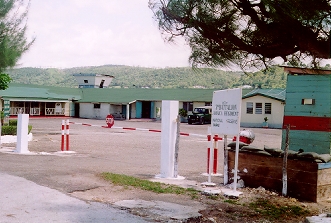 In
1981, sixteen years after Clifton Foster enlisted as a soldier in the Third Battalion, one
of its Sub-unit, Charlie (‘C’) Company was named after him. He had risen by then to the
rank of Major and Second-in Command of Third Battalion. Charlie Company barracks located
in Mandeville, central Jamaica, was officially named Foster Barracks the year after he
died in remembrance of him and the memorable six years he served as the Officer Commanding
that Sub-unit.
In
1981, sixteen years after Clifton Foster enlisted as a soldier in the Third Battalion, one
of its Sub-unit, Charlie (‘C’) Company was named after him. He had risen by then to the
rank of Major and Second-in Command of Third Battalion. Charlie Company barracks located
in Mandeville, central Jamaica, was officially named Foster Barracks the year after he
died in remembrance of him and the memorable six years he served as the Officer Commanding
that Sub-unit. 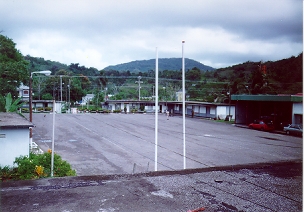 Whitehorne Barracks is the Frontier Camp in Port Maria. The camp which now accommodates
the troops of Echo (‘E’) Commpany grew out of the will of a few founding members according
to Major Hurlstone St Clair Whitehorne after whom the camp was named. Major Whitehorne at
the parade ceremony at which the Whitehorne Barracks was so named, recalled the
difficulties experienced by the founding members of the fledging days of the past, when
the Camp had no parade square, no barrack rooms, no transportation and improvised lighting
had to be used from privately owned vehicles to assist during night training. Major
Whitehorne (now Lieutenant Colonel) had the privilege of being present on the occasion
when the barracks was officially named in his honour on 25 January 1986.
Whitehorne Barracks is the Frontier Camp in Port Maria. The camp which now accommodates
the troops of Echo (‘E’) Commpany grew out of the will of a few founding members according
to Major Hurlstone St Clair Whitehorne after whom the camp was named. Major Whitehorne at
the parade ceremony at which the Whitehorne Barracks was so named, recalled the
difficulties experienced by the founding members of the fledging days of the past, when
the Camp had no parade square, no barrack rooms, no transportation and improvised lighting
had to be used from privately owned vehicles to assist during night training. Major
Whitehorne (now Lieutenant Colonel) had the privilege of being present on the occasion
when the barracks was officially named in his honour on 25 January 1986. 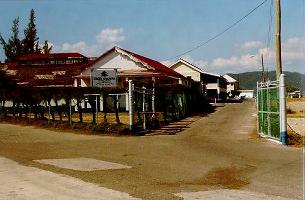 The name Cagway was given to
the westermost end of the Palisadoes Strip by the British. It is a corruption of the
Spanish word "Caguaya" which is part of the name "Punta Caguaya" given
to the same place by the Spanish.
The name Cagway was given to
the westermost end of the Palisadoes Strip by the British. It is a corruption of the
Spanish word "Caguaya" which is part of the name "Punta Caguaya" given
to the same place by the Spanish. 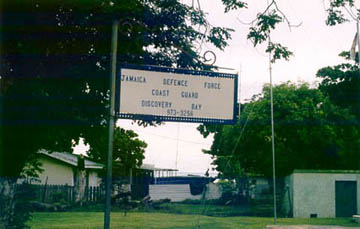 point for launching operations on the north coast of the island. The
station is manned by a normal complement of sixteen JDF personnel with a commissioned
officer in charge. The crew has one senior non-commissioned officer in charge. The crew
has one 12 metre patrol craft and one work boat available and are at 15 minutes notice to
move in response to maritime distress signals.
point for launching operations on the north coast of the island. The
station is manned by a normal complement of sixteen JDF personnel with a commissioned
officer in charge. The crew has one senior non-commissioned officer in charge. The crew
has one 12 metre patrol craft and one work boat available and are at 15 minutes notice to
move in response to maritime distress signals. 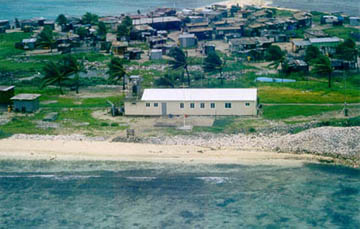 Coast Guard Station Pedro Cays was made operational on 29 November 1996. It
is manned by sixteen JDF and two Jamaica Constabulary Force (JCF) personnel with one 12
metre and one work boat at their disposal. In addition to its normal complement, the base
is designed to accommodate fisheries officers and scientists engaged in marine scientific
research.
Coast Guard Station Pedro Cays was made operational on 29 November 1996. It
is manned by sixteen JDF and two Jamaica Constabulary Force (JCF) personnel with one 12
metre and one work boat at their disposal. In addition to its normal complement, the base
is designed to accommodate fisheries officers and scientists engaged in marine scientific
research. 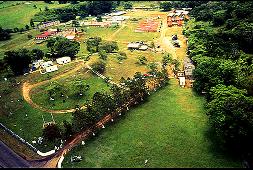 An island village in the parish of St Ann, there are various
theories put forward to explain the name "Moneague". One version is that the
name dates back to the time of the Arawaks and that "Moneague" is the modern
name derived from the Arawak word "Monique" – an old Arawak settlement. Another
version is that the name is a corruption of the archaic Spanish form "Monagua",
meaning lonely water, and so named by the early Spanish settlers after an underground lake
in the area which used to rise and fall periodically. Yet another version is that the word
was derived from a combination of two Spanish words, "Monte" and
"Aqua" meaning mountain water – another reference to the lake which is indeed
nestled in the mountains. There is still another version which holds that the word
Moneague came from the word "Moniqua" a word commonly used in Cuban dialect
meaning bush and jungle.
An island village in the parish of St Ann, there are various
theories put forward to explain the name "Moneague". One version is that the
name dates back to the time of the Arawaks and that "Moneague" is the modern
name derived from the Arawak word "Monique" – an old Arawak settlement. Another
version is that the name is a corruption of the archaic Spanish form "Monagua",
meaning lonely water, and so named by the early Spanish settlers after an underground lake
in the area which used to rise and fall periodically. Yet another version is that the word
was derived from a combination of two Spanish words, "Monte" and
"Aqua" meaning mountain water – another reference to the lake which is indeed
nestled in the mountains. There is still another version which holds that the word
Moneague came from the word "Moniqua" a word commonly used in Cuban dialect
meaning bush and jungle. 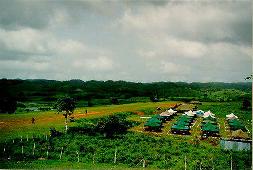 The barrack in Moneague was one of the six built in Middlesex. At
the beginning of the conflict with the Maroons, the British Troops were quite unaccustomed
to the country, the climate and the method of ambush warfare so skillfully practiced by
the Maroons. The soldiers were often worn out and exhausted by the long marches that were
necessary before they could make contact with these bush fighters. They were therefore at
a disadvantage whenever they encountered the Maroons and suffered early losses in their
clashes with them. The building of a series of barracks and fortified posts with
connecting roads as close as possible to the main Maroon settlements coupled with the use
of dogs and Mosquito Coast Indians, for tracking and fighting, had some positive effects
on the campaign of His Majesty’s troops against the Maroons and eventually led up to the
Peace Treaty of 1739.
The barrack in Moneague was one of the six built in Middlesex. At
the beginning of the conflict with the Maroons, the British Troops were quite unaccustomed
to the country, the climate and the method of ambush warfare so skillfully practiced by
the Maroons. The soldiers were often worn out and exhausted by the long marches that were
necessary before they could make contact with these bush fighters. They were therefore at
a disadvantage whenever they encountered the Maroons and suffered early losses in their
clashes with them. The building of a series of barracks and fortified posts with
connecting roads as close as possible to the main Maroon settlements coupled with the use
of dogs and Mosquito Coast Indians, for tracking and fighting, had some positive effects
on the campaign of His Majesty’s troops against the Maroons and eventually led up to the
Peace Treaty of 1739.  The
Battalion used the train extensively in Shettlewood and Montpelier areas but those areas
were found to be too far away and Moneague was the preferred alternative as it offered
similar terrain closer to Kingston. The Jamaica Battalion was then based on grounds of
what is now the Mona Campus of the UWI, and it would usually have one company undergoing
training in Moneague while the remainder of the battalion was on duty in Kingston. Many
British and Canadian Regiments conducted field training in Moneague at the time as well.
The
Battalion used the train extensively in Shettlewood and Montpelier areas but those areas
were found to be too far away and Moneague was the preferred alternative as it offered
similar terrain closer to Kingston. The Jamaica Battalion was then based on grounds of
what is now the Mona Campus of the UWI, and it would usually have one company undergoing
training in Moneague while the remainder of the battalion was on duty in Kingston. Many
British and Canadian Regiments conducted field training in Moneague at the time as well. 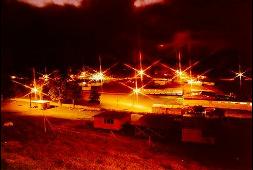 During the 1950s the Moneague Hotel saw less service as a barrack
for troops as in 1948/49 the military gradually transferred to its present location near
Walton. This movement of the camp was as a result of the hotel changing hands in 1948 when
it was leased by a new proprietor, who did extensive renovations and re-started the hotel
business. This venture did not last for very long as in 1956 the Moneague Hotel changed
hands again, was again remodeled and became the Moneague Teachers’ College. It has so
remained to this day. The side near Walton was an obvious one as water for the Camp (and
also the Moneague Village) was provided by a well in the vicinity which had been dug by
soldiers in 1943 and was operated and maintained by the army up until recent times.
Situated right next to the camp this well is still in service today supplying water to the
camp and the Moneague town. The well is now the responsibility of the National Water
Commission. The newly established camp near Walton was nothing more than a plot of land
with little development.
During the 1950s the Moneague Hotel saw less service as a barrack
for troops as in 1948/49 the military gradually transferred to its present location near
Walton. This movement of the camp was as a result of the hotel changing hands in 1948 when
it was leased by a new proprietor, who did extensive renovations and re-started the hotel
business. This venture did not last for very long as in 1956 the Moneague Hotel changed
hands again, was again remodeled and became the Moneague Teachers’ College. It has so
remained to this day. The side near Walton was an obvious one as water for the Camp (and
also the Moneague Village) was provided by a well in the vicinity which had been dug by
soldiers in 1943 and was operated and maintained by the army up until recent times.
Situated right next to the camp this well is still in service today supplying water to the
camp and the Moneague town. The well is now the responsibility of the National Water
Commission. The newly established camp near Walton was nothing more than a plot of land
with little development.